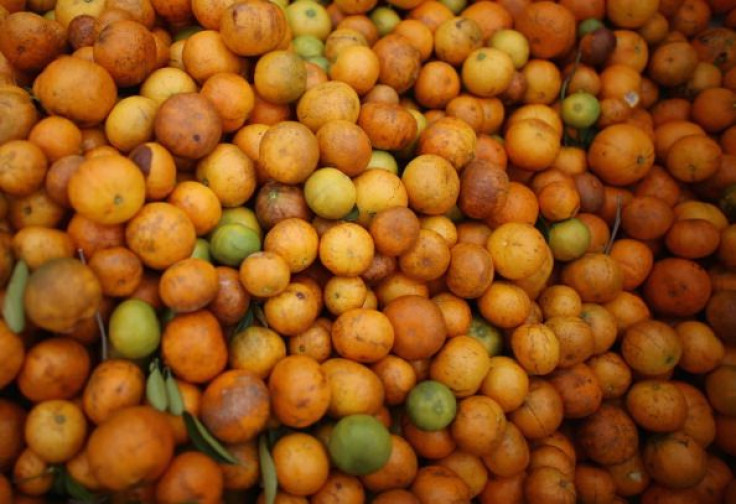Americans Aren’t Drinking Orange Juice Anymore, And It Could Be Bad For Their Health

If oranges are your favorite fruit, you may be in the minority. A new US Food Commodity Consumption report has revealed that America’s love affair with the citrus fruit, particularly orange juice, is coming to an end. Since 1994, children and adults have steadily been eating fewer oranges, a factor that may also be driving America’s decline in overall fruit consumption.
The report, which became available online this month, covered eating habits of different American demographics from 1994 to 2008. It is based on data regarding dietary food intake surveys collected by the USDA, Agriculture Research Service, and the U.S. Department of Health and Human Services, Agricultural Research Services.
America's decline in orange consumption stood out. For example, the report revealed that from 1994 to 2008, children and adults began to eat fewer oranges. For example, between 1994 to 1998 and 2007 to 2008, children’s orange juice consumption dropped from 42.4 to 31.9 pounds, fresh weight equivalent, per person, per year. In the same period, adults’ orange juice consumption dropped from 36.6 to 30.5 pounds.
It’s hard to distinguish just one reason for this change. Study co-author Biing-Hwan Lin suggested that rising prices of orange juice may play a role, Business Insider reported. Regardless of the reasoning behind it, this gradual turning from citrus fruits seems to have some far-reaching consequences, as Lin suggested that America’s rejection of oranges may be to blame for our increasing decline in fruit consumption. The USDA recommends we eat about 2-4 servings of fruit each day in order to maintain a healthy diet, and a lack of fruit in your diet, particularly citrus fruit, could have adverse health effects.
Fruits aren’t the only foodstuff falling out of fashion among the American public, whose relationship with vegetables also seems to be on the rocks. The report revealed that vegetable consumption has been declining among Americans of all ages and ethnicities since the mid 1990s. A 2015 report found that three vegetables account for over half of United States vegetable availability: potatoes, mostly in the form of fries, tomatoes, mostly in the form of sauce, and lettuce.
In addition to fruits and vegetables, America's dairy consumption dropped from the years between 1994 to 1998 and 2007 to 2008, falling from 220.5 pounds per person to 211.4 pounds. According to the report, this was largely due to the fact that Americans began to drink less milk; the average American drinks 37 percent less milk today than they did in 1970, and this spans every type of milk from fully skimmed to full fat, according to The Washington Post. While the exact cause for plummeting milk consumption is hard to pinpoint, The Washington Post suggests that parents and schools have stopped providing children with milk as much in the past, due to the beverages’ high fat content and the increasing problem with childhood obesity (although this hasn’t helped too much).
But while milk, fruit, and veggies are on the decline, the report revealed that Americans are eating more chicken than they have in past years. It may be that Americans in general are replacing their meat with poultry, as beef and pork consumption has simultaneously been on the decline.
Source: Lin BH, Buzby JC, Anekwe TD, Bentley JT. U.S. Food Commodity Consumption Broken Down by Demographics, 1994-2008. 2016



























